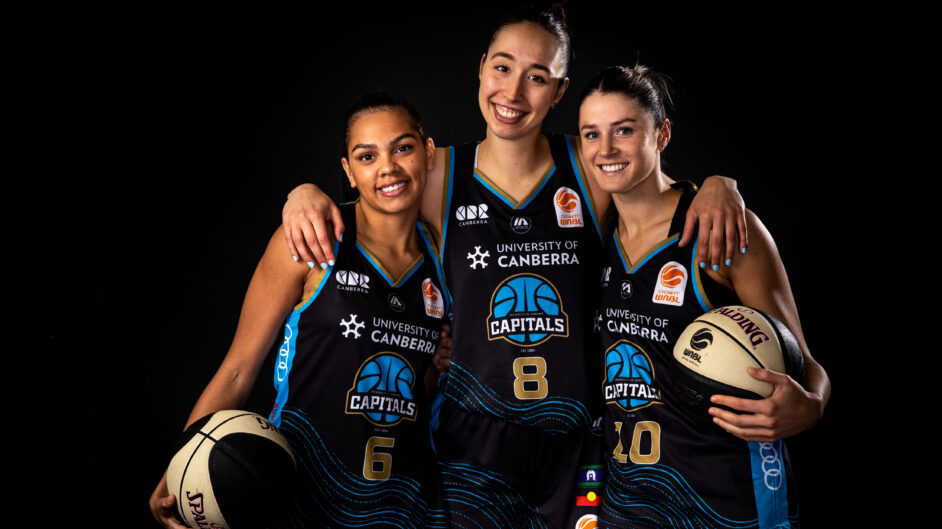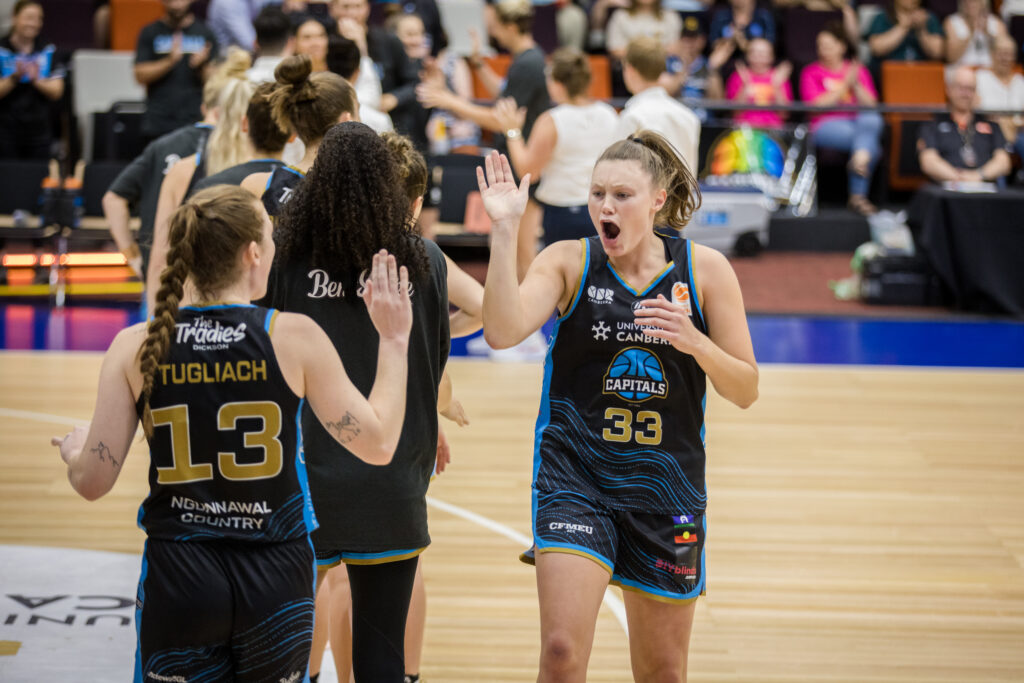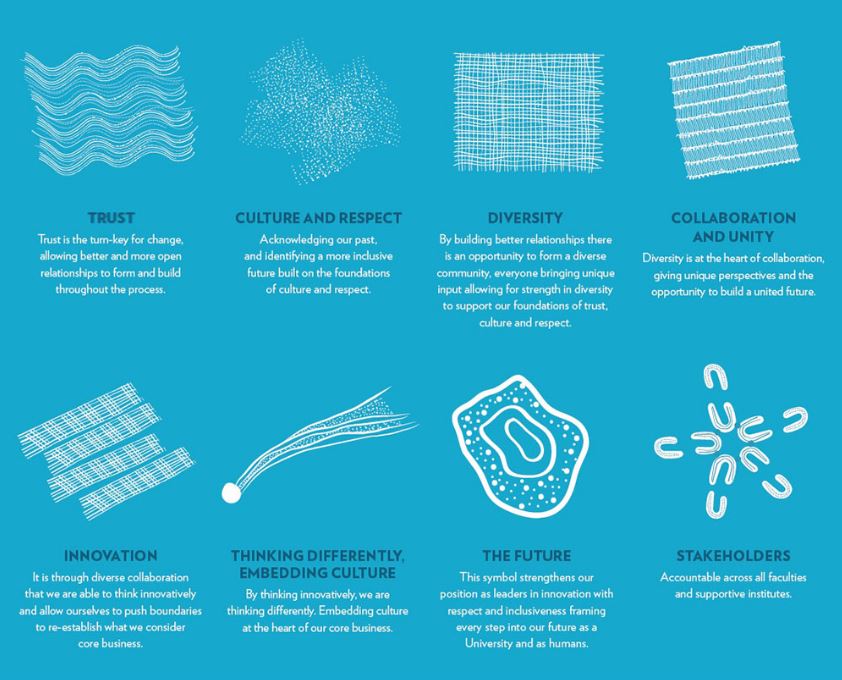UC Capitals Uniform and why it’s a season long commitment

The UC Capitals are joining the WNBL and other clubs in proudly marking the Cygnett WNBL’s Indigenous Round from February 11-19.
As part of the round, teams will wear indigenous-themed jerseys and warm-up tops, with the Capitals game against Adelaide Lighting to be held on February 18 at the National Convention Centre Canberra from 5.30pm.
This season, the UC Capitals made the decision to wear an Indigenous uniform for the entirety of the season. This decision was made, as part of the club’s ongoing commitment to reconciliation and the celebration of First Peoples culture and history.

Speaking on behalf of the players, Brittany Smart said it is important to the team to keep taking steps forward like this.
“Last season, we really asked to not make it just a token round but to make sure we’re representing the ground that we’re playing on,” she said.
“So one way to show that through every single game, is to include the Indigenous art on our home and away jerseys.”
The design featured on the UC Capitals uniform was a collaboration between the University of Canberra, Gilimbaa, Ngunnawal Elders and artists.
Each element within the design tells an important part of the University of Canberra story that celebrates diversity and inclusive relationships.

Two of the artists involved in the design are Lynnice Church and Rachael Sarra. Rachel believes in the power that art plays to tell a story and to allow people to explore complex ideas in an engaging and inclusive way. As an Aboriginal artist from Goreng Goreng Country, Rachael draws on her heritage to produce pieces that are steeped in culture while being contemporary and future facing.
Lynnice Letty Church is a Ngunnawal/Wiradjuri and Kamilaroi woman who has lived in Canberra for most of her life with her husband and two teenage children. Lynnice is part of a large family group whose Ngunnawal connection is through her father’s maternal bloodline. She is very passionate about her people, culture and country and representing this through art.
Lynnice took some time to share with the team, the meaning behind the treatment.
“It reflects the importance of relationships and the role we play in our families and community,” she said.
“It recognises the diversity of our gifts and talents and that each of us has a responsibility to use this in a way which is able to positively impact and contribute to the world around us.
“The story symbolises our cultural ways of learning that each of us has a journey that is unique and that we listen to the Elders who are able to teach and share their knowledge which is able to guides us along the right path.
“We know that our culture is important to our sense of identity and belonging. It is our strength and what brings us together. We are a collective culture, we know our roles and responsibilities, all that we do is not about our self but for the good of all. We recognise each persons place, we balance each other and we have a shared understanding of how we live and walk together.
“The symbols show Elders as our teachers.
“The pathways of learning and our journey.
“The mountains as a place where our Elders taught lore.
“The diversity of who we are and our gifts and how it contributes to the collective good.
“Our responsibilities and roles in our families and community.”
